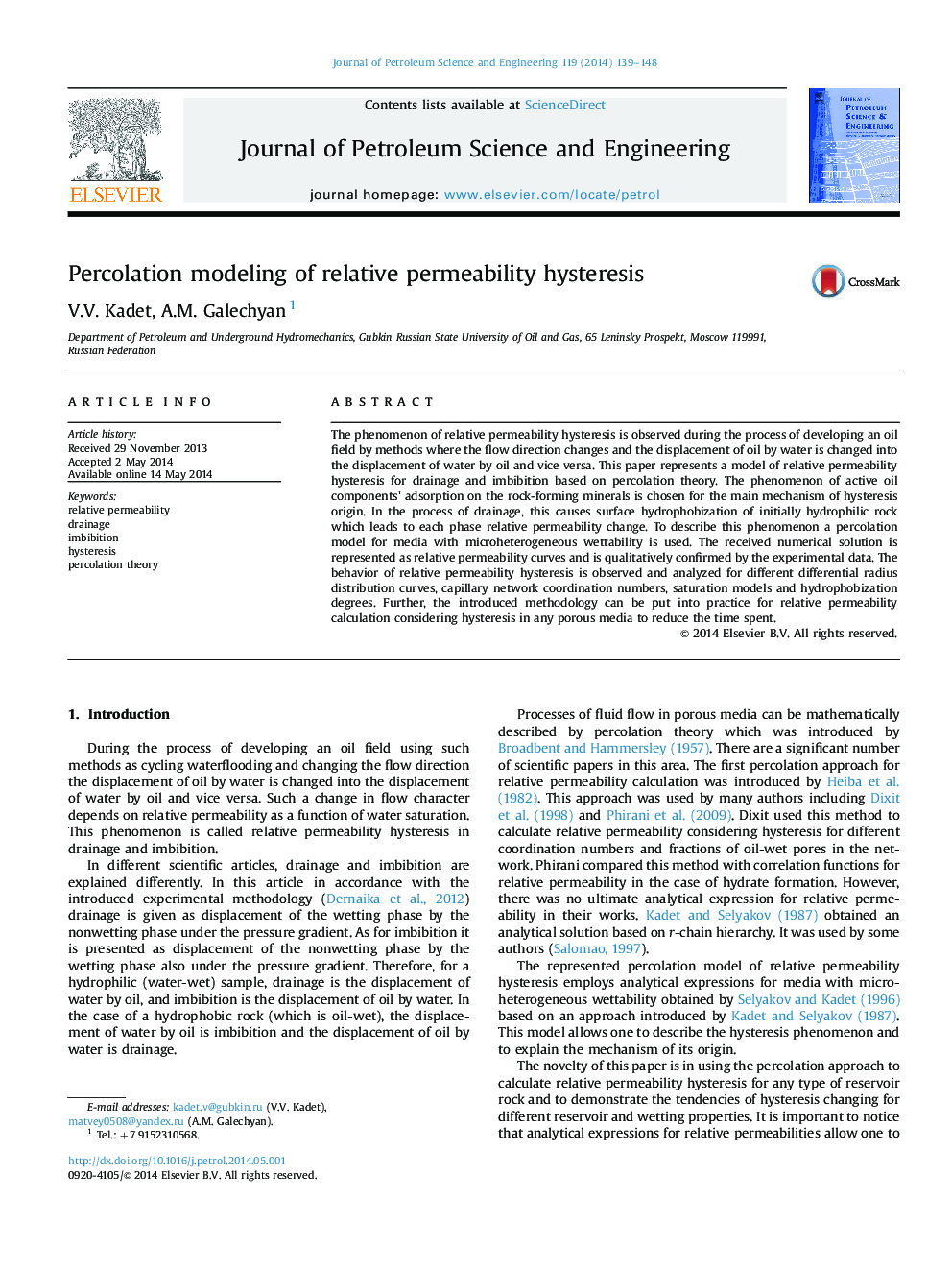| Article ID | Journal | Published Year | Pages | File Type |
|---|---|---|---|---|
| 1755114 | Journal of Petroleum Science and Engineering | 2014 | 10 Pages |
•A percolation model of relative permeability hysteresis with analytical solution is built.•The tendencies of relative permeability hysteresis behavior are analyzed for different reservoir and wetting properties.•The wetting parameters – κ and α – are calculated for dolomite- and calcite-rich samples.
The phenomenon of relative permeability hysteresis is observed during the process of developing an oil field by methods where the flow direction changes and the displacement of oil by water is changed into the displacement of water by oil and vice versa. This paper represents a model of relative permeability hysteresis for drainage and imbibition based on percolation theory. The phenomenon of active oil components׳ adsorption on the rock-forming minerals is chosen for the main mechanism of hysteresis origin. In the process of drainage, this causes surface hydrophobization of initially hydrophilic rock which leads to each phase relative permeability change. To describe this phenomenon a percolation model for media with microheterogeneous wettability is used. The received numerical solution is represented as relative permeability curves and is qualitatively confirmed by the experimental data. The behavior of relative permeability hysteresis is observed and analyzed for different differential radius distribution curves, capillary network coordination numbers, saturation models and hydrophobization degrees. Further, the introduced methodology can be put into practice for relative permeability calculation considering hysteresis in any porous media to reduce the time spent.
